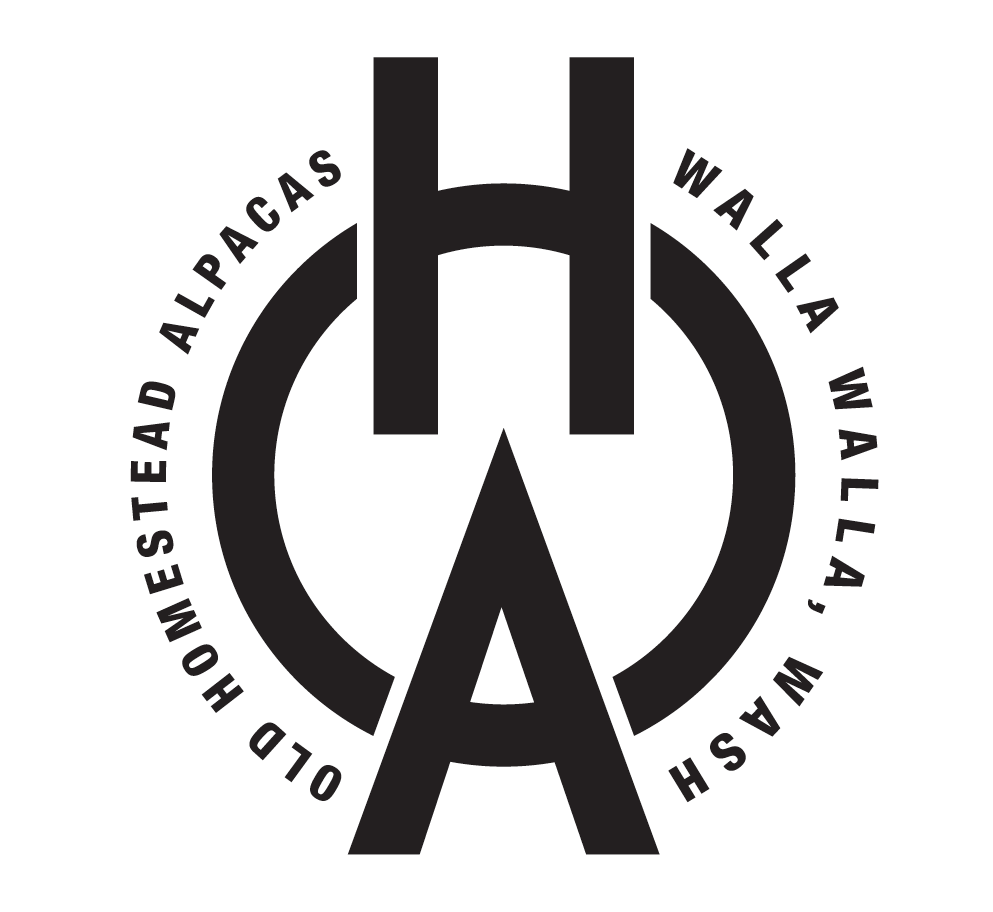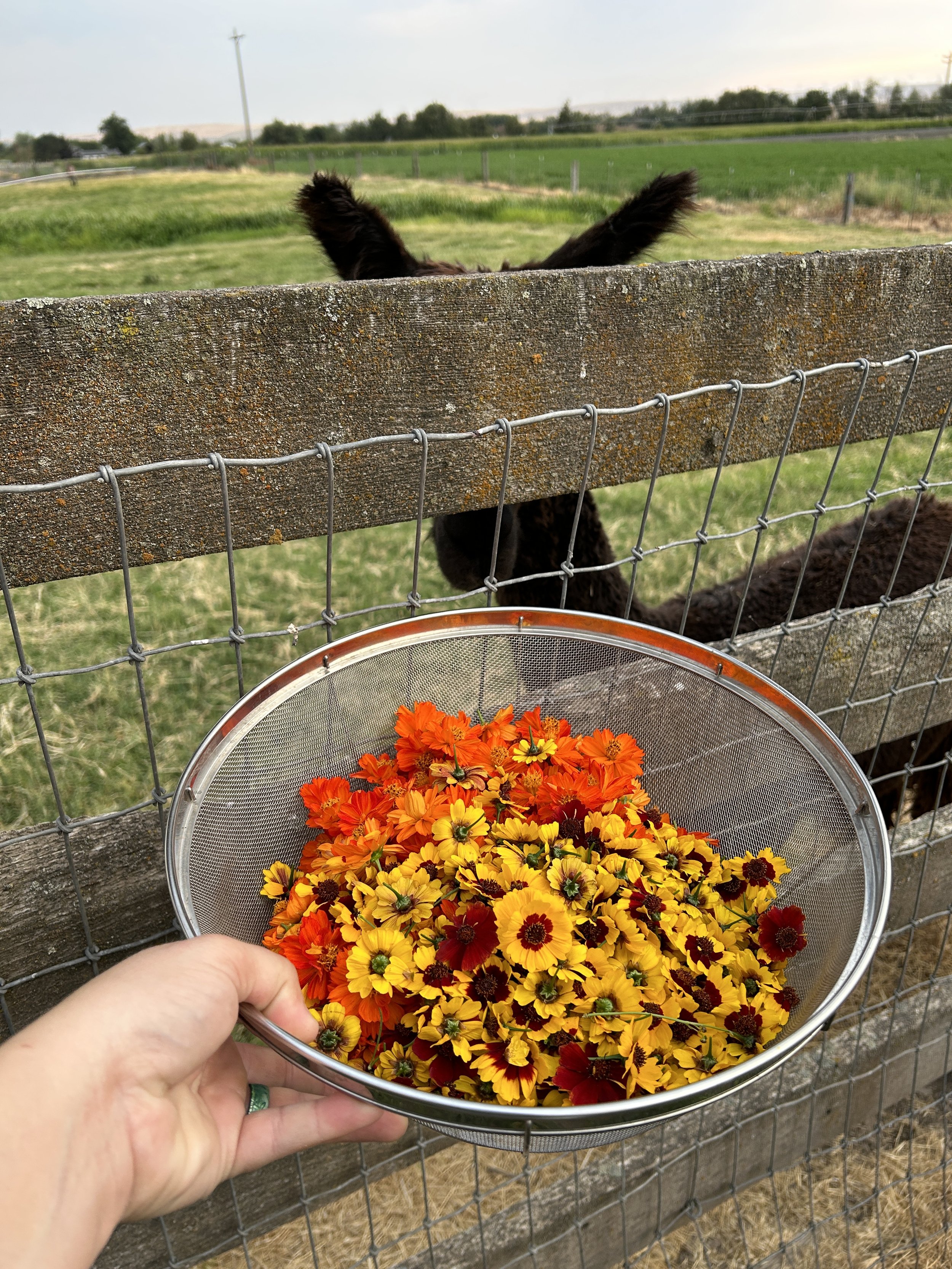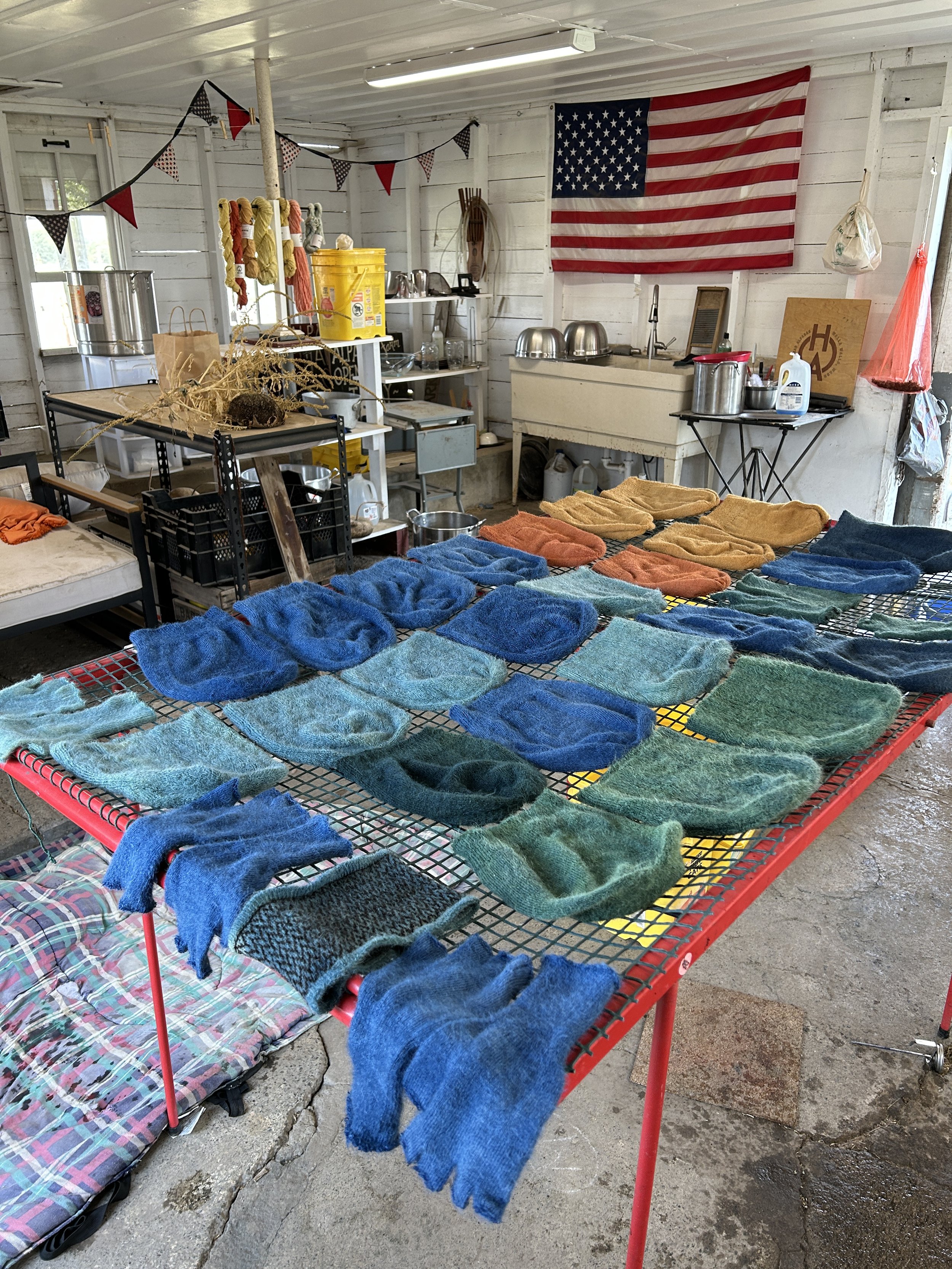How the Collection comes to life
Every year, I think…
“Is this the last Harvest Knitwear Collection?”
I’m sure you might be wondering what I mean by that?!
Does it mean I’m thinking of dispersing the herd and calling it quits?!
NO. I assure you.
But in terms of making a product from their fiber…?
One that’ll fit and be enjoyed by many…?
Well that always feels like it could end at any point.
Those who’ve gotten my emails, read this here blog, or come to an event & chatted with me in person won’t be surprised to hear me mention this.
I don’t want this to be an overwhelming or heavy post, so I’ll break it down semi-short and sweet (and hopefully palatable).
I only get one harvest a year. What that means is — I have to feed/water/house/doctor/raise them an entire year before I can harvest a crop (fiber).
Once it’s harvested…then begins another full year of processing.
Processors need to be paid in the now…despite the fact that I don’t yet have a marketable item from that harvest.
That means cash flow is my biggest ongoing “thing”.
I offer agritourism (monthly meet & greets, private tours, etc.) as a way to help keep the lights on (or the well pump running) while I await my finished alpaca fiber items from the mill.
Back in 2018, with the increasing costs of raising and keeping things alive, I expanded to selling cut flowers in the summer.
I sell bouquets at the Downtown Walla Walla farmer’s market and via subscription delivery service in the spring & early summer months to have cashflow to pay final fiber processing costs and to buy the herd’s winter hay (their only source of winter food).
I hit pause on farmer’s markets & agritourism right before Labor Day as the newly knit garments arrive back on the farm. This gives me time to hand dye them in small batches using the heirloom dye plants/flowers that I grew and stashed all summer.
Although I dearly miss the revenue of weekly markets and monthly events during “dye season”, it takes all my creative focus to get it done without ruining it or burning down the dyehouse ;-)
Once everything is dyed, dried and labeled, I load it onto the farm store on this very website.
Each item has a style and a color — and needs to be photographed.
I take a detailed inventory when I load each item onto the site. My biggest fear is — loading more of any one color or style and then overselling. It’s not like I can just whip out another one…as I’m sure you’ve gathered just by reading these bullets!…that’ll take another year!
I’ve been very fortunate these last few years…every farm fan…like YOU, reading this right here, right now!…has shown up in earnest to my annual online sale.
In 2022, I launched the sale and had over 100 orders in the first hour alone. Most styles were sold out within just a handful of hours…and I was completely sold out in barely 8 hours.
I pack each order by hand in the farmhouse, usually with a steady stream of grateful tears…and somewhat slight panic.
So you’re probably wondering…okay, so what’s the problem?!
Well, rewind a bit.
Remember that part about “a full year of processing” that I mentioned up in those bullets?
That step happens nearly as soon as the fiber is shorn. Most years, I shear it on a Monday and I’ve got it boxed up, shipped and arriving across the country to Minnesota to the fiber mill by that same Friday.
That’s because I’ve coordinated with the mill to get it into the production queue ASAP.
My primary goal is to get that year’s harvest into a marketable good the same year it was shorn…so I can have revenue to offset all the costs it took to grow and produce it…
PAUSE.
When is the best time to sell knit hats, scarves and mittens, you ask?
I can assure you, it’s not July…
But it’s also not after the holiday shopping rush in November, either.
Since it takes months for the fiber processors to transform it from a raw fiber to a finished garment…sales hinge on processor lead times.
Simply put, even with commercial processing equipment, making yarn & garments from a natural fiber is an inherently long lead process.
Some mills have a 1 year turn around timeline to account for those fibers “ahead of you in line” along with what it takes to do the job once it’s underway.
Luckily I’ve been closely working with our processors for several years now, I’ve been able to see between a 3- to 5-month turnaround.
Good relationships, good intentions, good equipment and good work are not immune to LIFE.
Things happen. Those processors are small businesses like me.
And while we all plan to keep fighting the good “American Made” fight, nothing for any of our businesses is guaranteed.
When you couple that with the continued and rising costs of…literally…every…single thing…it’s a shuffle.
Frankly, in terms of economics, it’s a shell game. Not gonna lie.
Even in my 9th year.
Let me illustrate with a spreadsheet (please don’t gag).
I’m not sharing this as a “woe is me” tale, but just for context.
It’s not false scarcity when I market the Collection ((oh yeah there’s that year-round marketing bit, too!))…when I describe it as…
Limited Edition all natural knitwear
The reality of running a business is that you plan for the then, live in the now, and adjust as you go.
Every year I plan to have an annual Harvest Knitwear Collection. And I work towards it knowing that one or more processors could hiccup and I could not have my single largest revenue for that year.
That’s just the reality.
I marvel and cry in gratitude at the completion of any one single step.
Shearing…
Yarn arriving on cones…
Finished pieces going into the dye pots…
The website launch…
Packing of the orders…
That overstuffed van being emptied at the Post Office…
Seeing items arrive and pictures being shared…
I really don’t take a collective sigh of relief until that last item is delivered - sometime in November. I’ve been so fortunate to haven’t had many “behind-the-scenes web issues” but it’s definitely not a perfect order fulfillment process…yet.
I’m usually able to refill & replenish myself in the winter to have the stamina to undertake it another year.
But even I know that’s also subject to change with time and nature.
For now, I can confidently say that there will be a 2023 Harvest Knitwear Collection.
Because most of it’s been knit up and dyed already.
And it’ll debut in October.
Beyond that? There’s no telling for sure.












